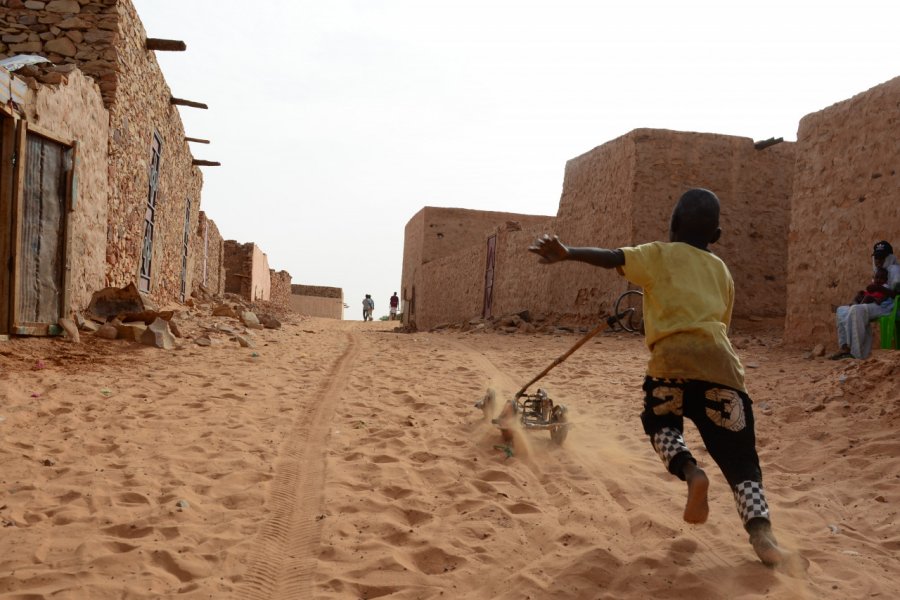Travel Guide Chinguetti
Find an accommodation
Advertising
When you come from Atar, after several tens of kilometers of a stony track in the middle of the reg, the arrival on Chinguetti is majestic. The colored silhouettes of the inhabitants who advance slowly on the sand suspend time. Chinguetti is a wonderful city, where you have to enter quietly, on tiptoe. You first distinguish, in the distance, the imposing mass of the dunes of the powerful erg Ouarane, at the foot of which Chinguetti seems both huddled and stuck. The dunes make both the happiness of this city by offering tourists an unreal vision that makes its success, and unfortunately its misfortune, since it is regularly taken over by the sand.In this "Sorbonne of the desert", as it is sometimes called, one can clearly distinguish the wadi that separates the recent constructions from the old city where a few families still live, and where the mosque, a school and some libraries are located. At night, there is a strange silence in the alleys, while during the day, they swarm with sellers of trinkets and representatives of cooperatives who try to lure the tourist who came to visit the libraries.The main tribes that make up the population of Chinguetti are the Ida-ou-Ali, the Laghlal and the Oulad Gheilan.Spiritual capital. The origin of the city dates back to the 13th century, when nomads created Abweir, a few kilometers away, of which vestiges can still be seen to the north-east of Chinguetti by following the wadi. Conflicts between the inhabitants of Abweir led some of its population to settle a few kilometers further on, on the site of present-day Chinguetti. The flourishing trans-Saharan trade ensured the prosperity of the city for a long time. At its peak in the 18th century, Chinguetti had a dozen mosques. With the decline of the caravans, the twentieth century saw the city decline, like all the other historical cities of Mauritania that depended essentially on trans-Saharan trade.Without getting into the controversy of whether or not Chinguetti is the seventh holy city of Islam, let's just say that the Qur'an only mentions three holy cities: Mecca, Medina and Jerusalem. What is undeniable, however, is that Chinguetti was a very important gathering point for the caravans of the faithful on their way to the pilgrimage to Mecca. So much so that when these pilgrims were asked where they came from, they all answered from Chinguetti. Mauritania was even called the country of Shinguet for a time, which shows the spiritual importance of this city.Exit from the red zone. Chinguetti, like Ouadane, was one of the main victims of the red zone established by Western governments. Today, Chinguetti is in the yellow zone, that is to say reinforced vigilance, which allows it to receive many visitors again.Note that the wadi that separates the two parts of the city is also the axis - a track that is not always well defined - that allows you to reach Tanouchert and Ouadane if you don't want to take the shorter but less spectacular road.
What to visit Chinguetti?
Suggested addresses Chinguetti
Weather at the moment
Advertising
Organize your trip with our partners Chinguetti
Transportation
Book your plane tickets
Car Rental
Boat rental
Accommodation & stays
Find a hotel
Holiday rental
Find your campsite
Tailor-made trip
Immersion travel
Services / On site
Activities & visits
Find a doctor
Chinguetti travel inspiration
Find unique Stay Offers with our Partners
Pictures and images Chinguetti
Other destinations nearby Chinguetti
5 km away
100 km away








